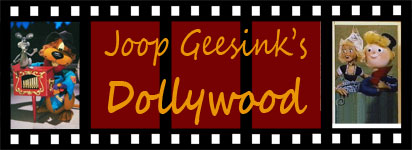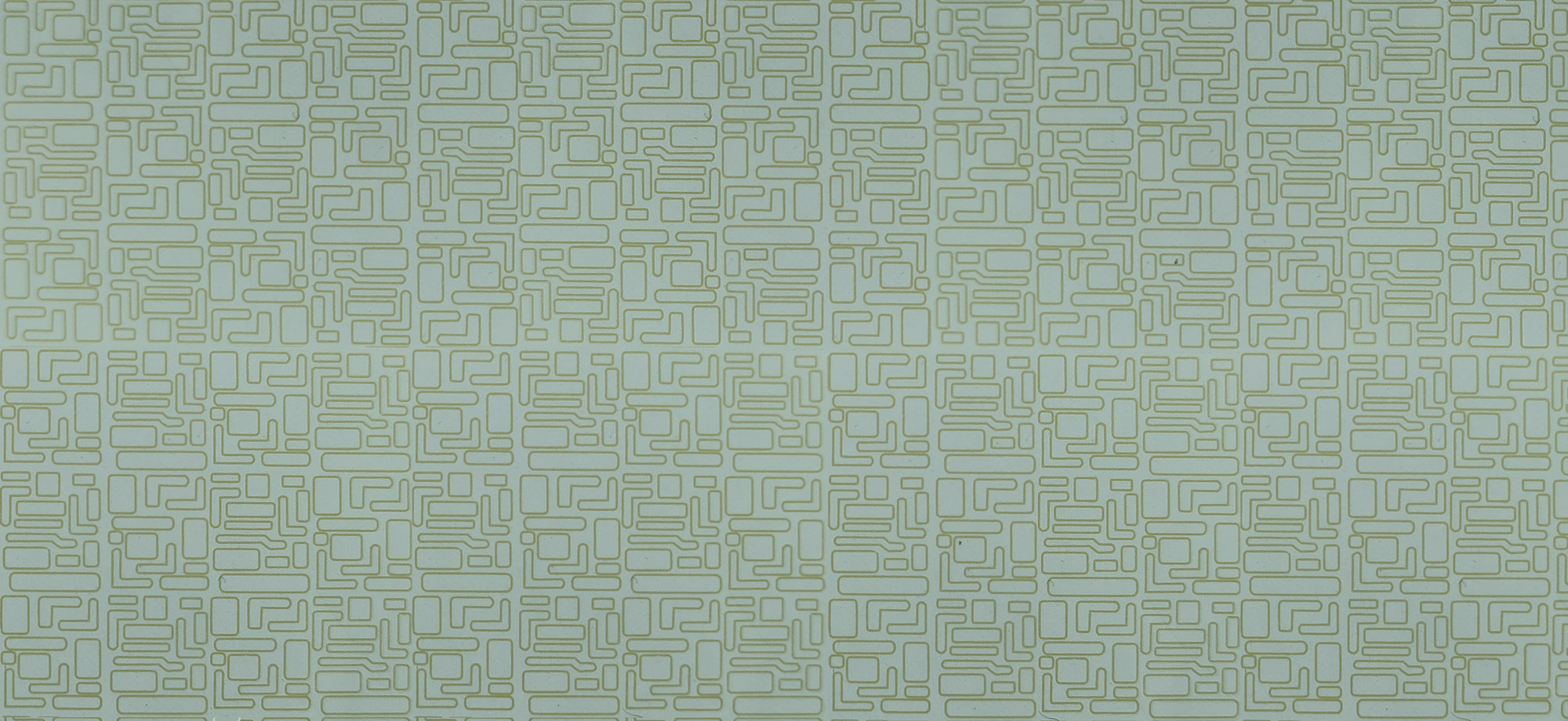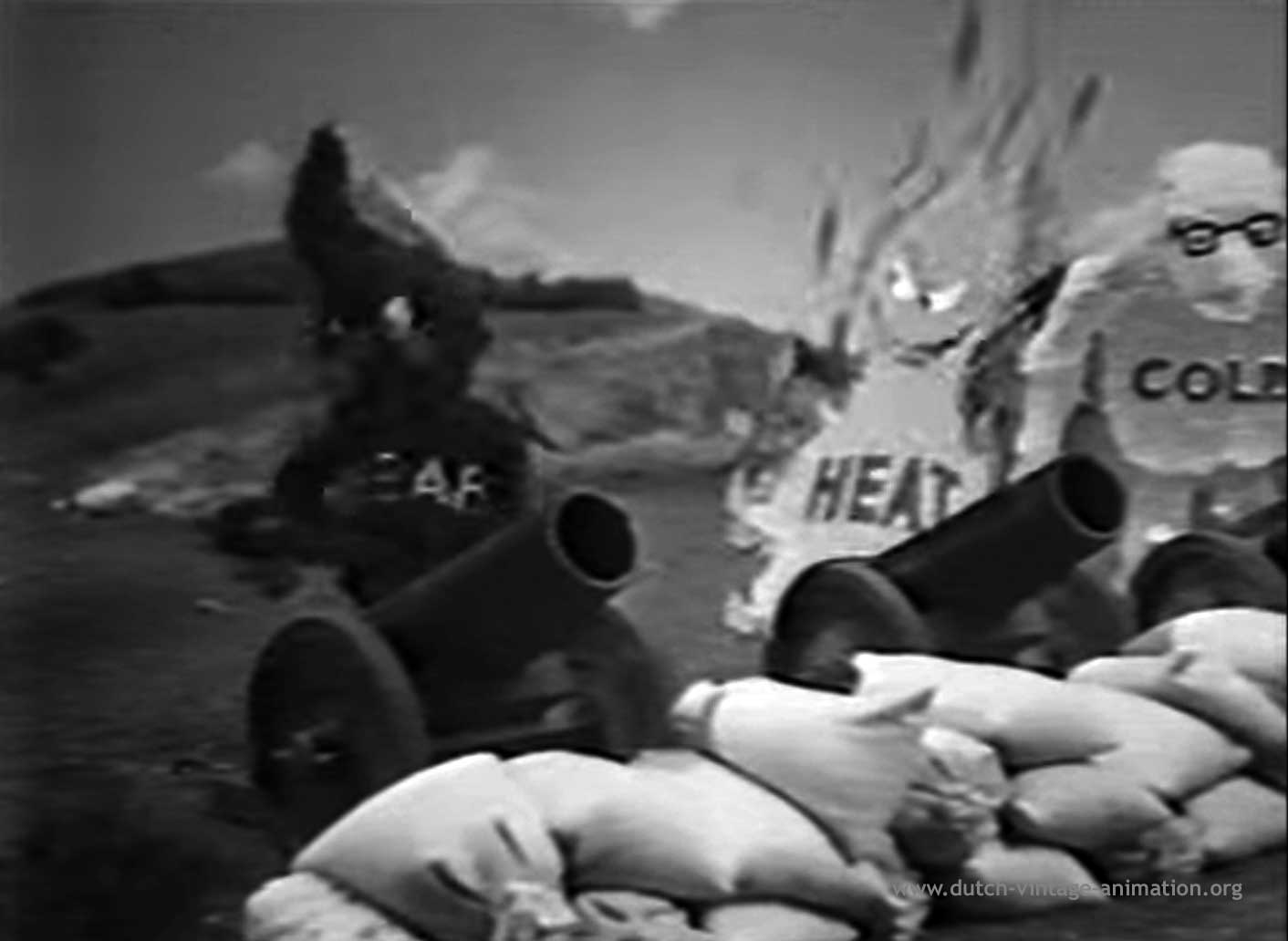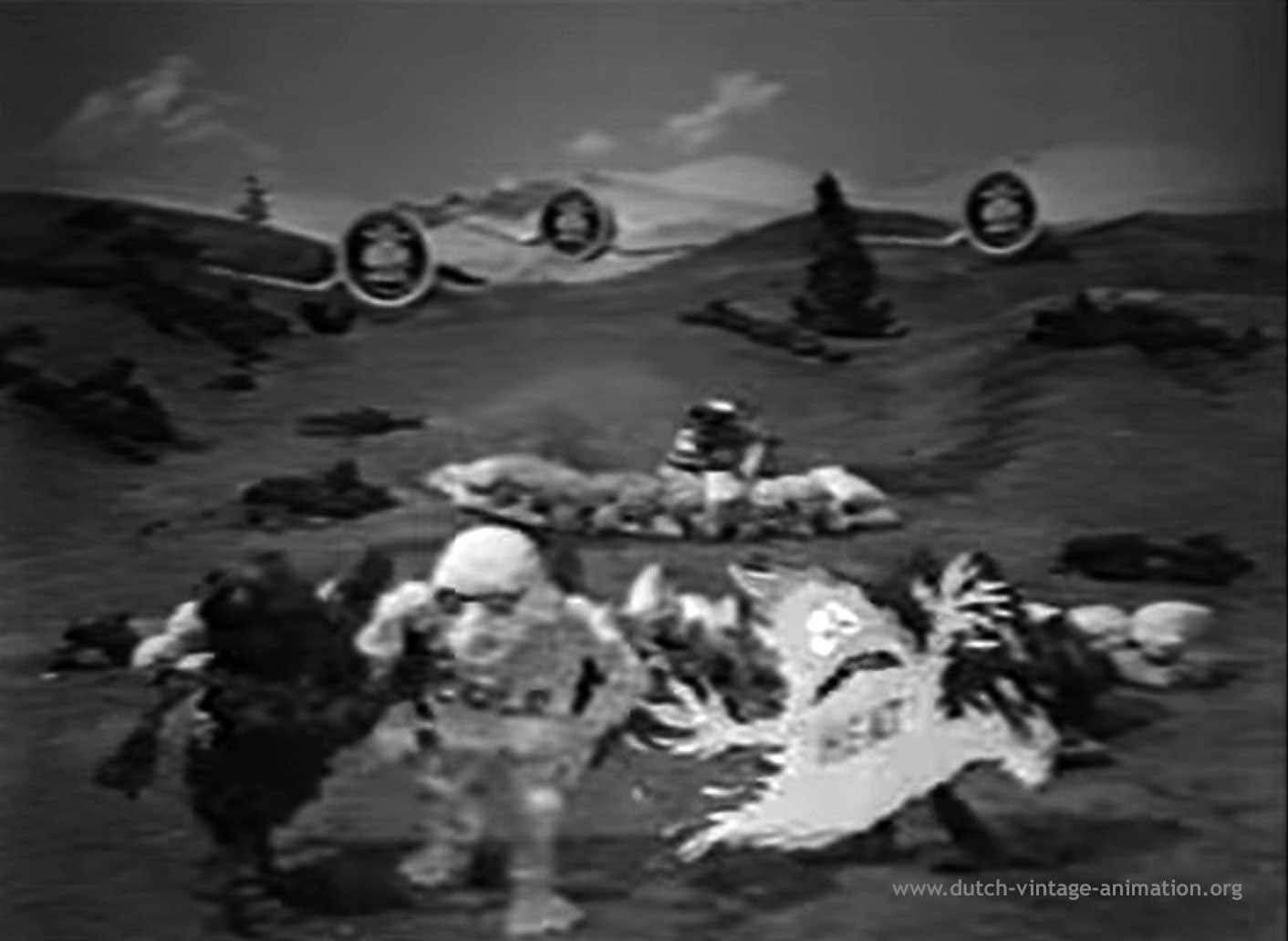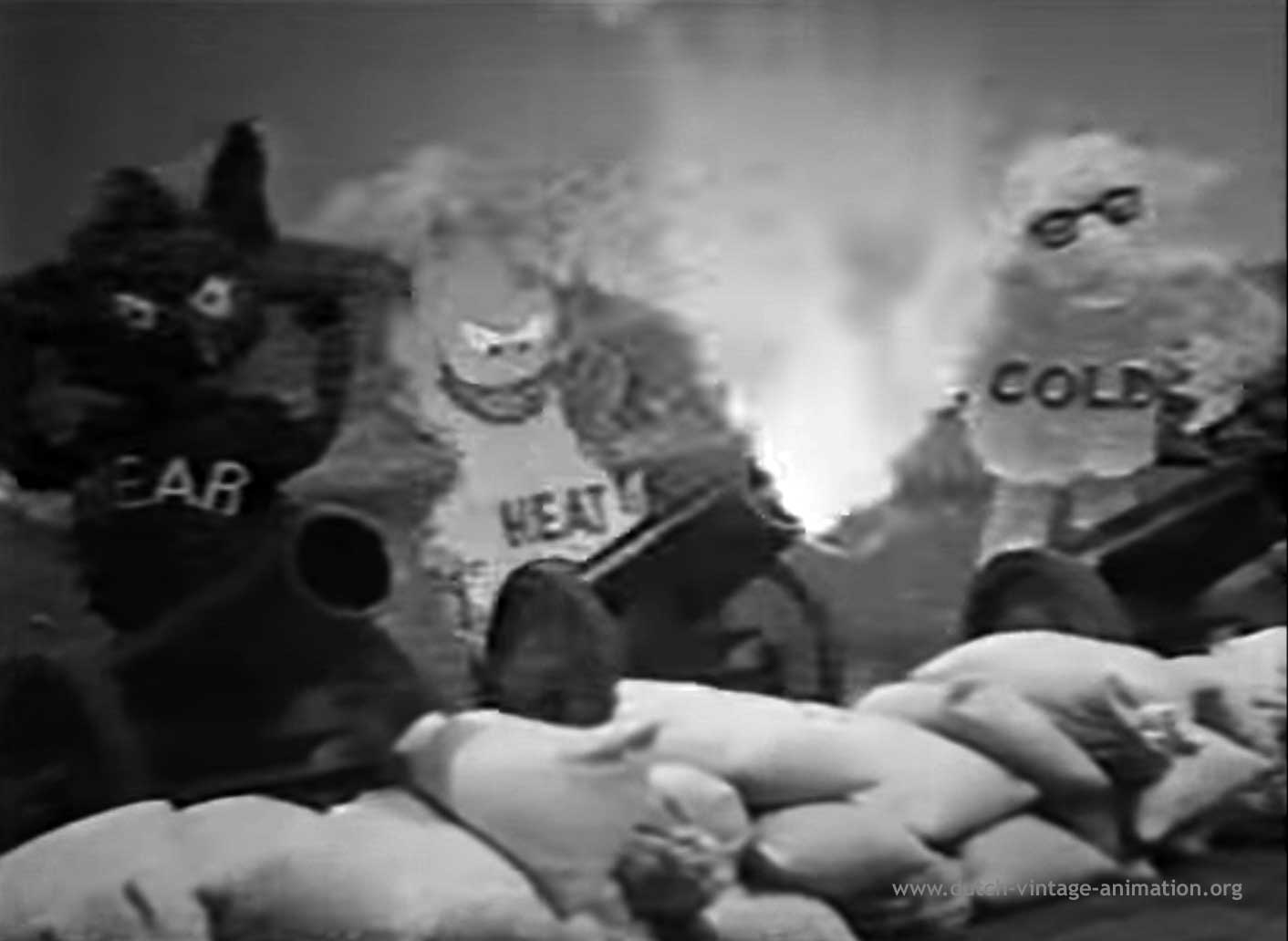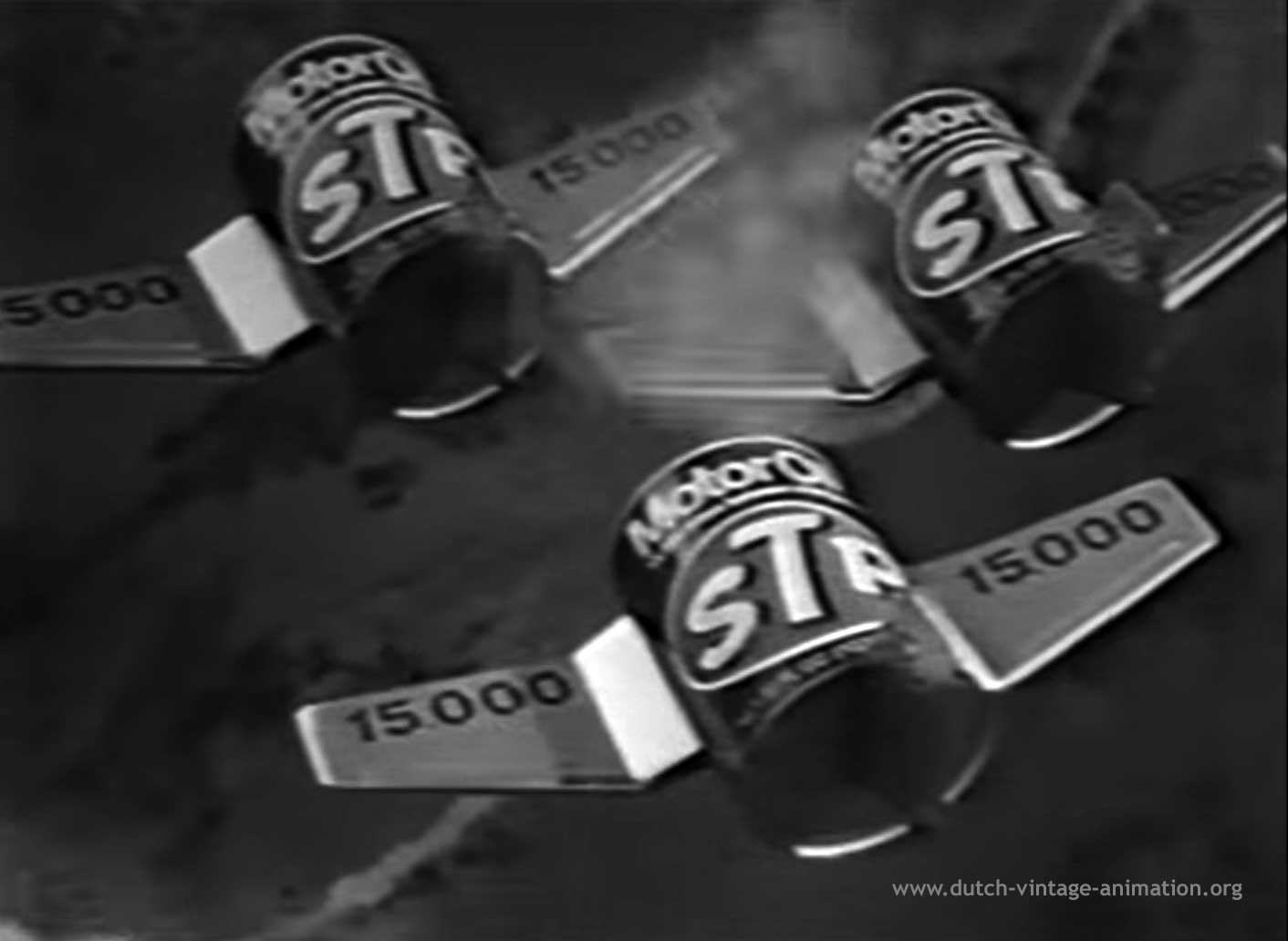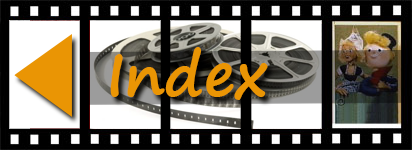Fighting hostile elements
A (car) engine is attacked by dangerous elements: dirt, heat, cold, mud. Each attack is repelled. A special flying squadron offers protection. This squadron is formed by cans of STP motor oil.
Trivia
This film dates from long before the introduction of 3D computer animation. This meant a considerable technical challenge for the realisation. Amorphous mass had to be animated: 'mud' 'fire', 'ice', 'dirt'. This demanded a special technique for this film.
It was a good idea to portray these pollutants as human figures. But the different shapes and structures within one shot also demanded a well-considered approach.
- The DIRT figure was made entirely of foam rubber, with a wire skeleton of aluminium in it.
- The FIRE figure was copied as a (cartoon) double shot between the puppets. The puppet animator had to take into account the space for the fire figure.
- The ICE figure is fairly transparent in the original (colour) film and was therefore made of transparent silicone rubber. This was a stiff material, difficult to animate.
- The MUD figure is again made entirely of foam rubber.
The camera men of Dollywood were very skilled at making double shots in camera. This often provided a solution for awkward scenes. When necessary, the double shots were made in the film laboratory.
This commercial was produced for the American market. Unfortunately, this is a poorly preserved video copy, of which the colour has faded.
Flames
When the engine block is struck by a fire (heat), the impact was animated in the set with cut-out flames. To achieve this, a previously animated series of cartoon cells was painted on sturdy transparent material (acetate film) and cut out along the contours. The contours matched the contours of the engine block.
Because this is very laborious, it was probably decided not to show all the impacts. The other impact on the engine block is that of mud. This could be painted over the victim as animated mud splashes.
For this work, the rule was 'what you see is what you get'. After all, video post-production did not exist. When a gun was shot, the flame was also painted (on glass plates) in the scenery, image by image.
Flying in stop-motion
In the opening shot, the oil cans come flying into the picture in a tight formation. Later in the film, you see details of the 'plane' leaving the formation.
For such shots, it was customary to work in steps.
1. The oil can was photographed in an empty setting at various angles.
2. The photos were then carefully cut out and pasted onto cartoon film.
3. Under a cartoon camera, the image was physically composed (composed) of several layers: below the sky with clouds, on top of that came the layer with the photos of the can and above that a layer with clouds, which provided extra depth.
Credits
| Origina title: | STP Motorolie | |
|---|---|---|
| Client: | STP | |
| Year of production: | 1965-1970 | |
| Duration: | 30 seconds | |
| Art Direction: | Unknown | |
| Composer: | Unknown | |
| Animation: | Unknown | |
| Poppen/props: | Harry Tolsma / Theo Doreleijer | |
| Format: | 35 mm, Technicolor |
